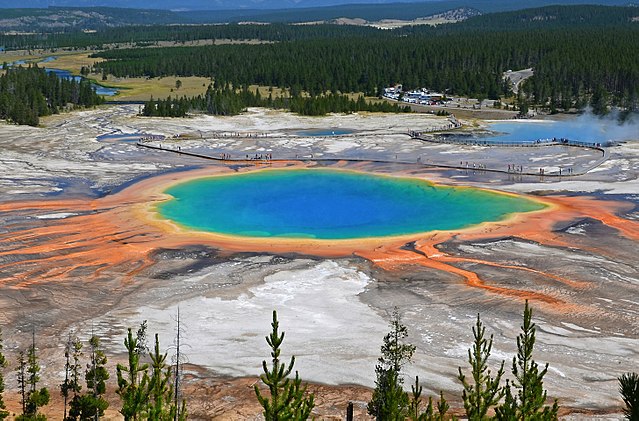A fountain, from the Latin "fons", meaning source or spring, is a decorative reservoir used for discharging water. It is also a structure that jets water into the air for a decorative or dramatic effect.
(Center) Jet d'eau, (Geneva, Switzerland) Clockwise from top right (1) Fontana di Trevi (Rome) (2) Place de la Concorde (Paris) (3) Fountain in the Garden of Versailles (Versailles) (4) The Hundred Fountains, Villa d'Este (Tivoli, Italy) (5) Fuente de los Leones, (The Alhambra, Granada) (6) Fountain in St. Peter's Square (Rome) (7) Samson and the Lion fountain (Peterhof, St. Petersburg, Russia) (8) Dubai Fountain (Dubai)
An Egyptian fountain on the Temple of Dendera
Attic Greek vase from South Italy, about 480 B.C.
Hellenistic fountain head from the Pergamon museum
A spring is a natural exit point at which groundwater emerges out of the aquifer and flows onto the top of the Earth's crust (pedosphere) to become surface water. It is a component of the hydrosphere, as well as a part of the water cycle. Springs have long been important for humans as a source of fresh water, especially in arid regions which have relatively little annual rainfall.
On an average day nearly 303 million US gallons (1,150,000 m3) of water flow from Big Spring in Missouri at a rate of 469 cubic feet per second (13.3 m3/s).
Grand Prismatic Spring, Yellowstone National Park, Wyoming
A natural spring on Mackinac Island in Michigan
Sunrise at Middle Spring, Fish Springs National Wildlife Refuge, Utah








